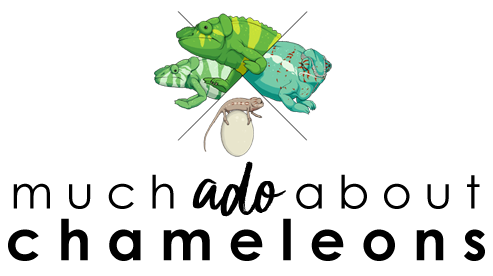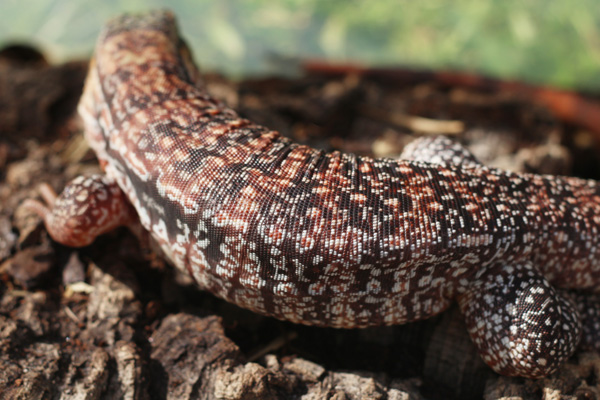I wanted to address something which still surprises me, 15 years into working with exotic animals and reptiles, which is people's resistance to seeking medical attention for their pet reptile. I've never understood why but people have a real aversion to taking their reptiles to the vet. Below I have dispelled a few myths about reptile injuries, provided some money-saving tips, and showcase a few chameleons with real issues and their treatment.
MYTH #2 - "I can treat injuries at home with house-hold products, like Neosporin."
*TIP - Going to a vet during normal operating hours will always be more affordable than an emergency clinic. Make sure to treat issues soon instead of waiting until your animal is on death's door at 2:00 am on a Sunday.
*TIP - Sometimes reptile vets have been known to get booths at
When Titan's owner realized that his lips did not look normal, they were alarmed and sought out help. Unsure of what it was they posted this picture to a forum and immediately made a vet appointment when they were informed that it was, indeed the beginning of mouth rot (an infection of the mouth that can be fatal if left untreated).
This kind of thing does not look immediately life threatening but swelling of the mouth/lips, puss, and bleeding gums can all signal stomatitis/mouth rot, which can dig deep into the bones and lead to an untreatable, deadly infection. Titan is lucky that his owner was concerned enough to ask. Treating these things early will mean that it will be easier to snuff out, cheaper to treat, and will be much easier on both pet and owner. Titan is now on antibiotics which should clear up the infection effectively in a few weeks. His owner has promised to keep us updated on how he does.
4
*TIP - Reptile rescues are willing to help if possible. If you cannot
afford medical treatment and cannot bear to euthanize your pet, a
reptile rescue might be the best option. http://www.chameo.org/ is
one such chameleon rescue.
MYTH #1 - "Injuries just aren't as serious as they would be in a dog/cat."
I do not know why, but this line of thought seems to be super common. I have seen chameleons (and other reptiles) with very serious burns, cat bites, cuts, and other injuries and people do not seem to consider them emergencies. ALL injuries of this kind (especially cat bites) are capable of getting infected, becoming necrotic, and causing death. Additionally, they are also very painful, even if reptiles don't show pain like other animals. All of these injuries should be brought to the attention of a vet, so antibiotics, ointments, or surgery can be prescribed if appropriate.
 |
| Baby Meller's chameleon (C. melleri) with an intestinal prolapse. This needed immediate medical attention, as it cannot be treated at home without proper, professional guidance. |
MYTH #2 - "I can treat injuries at home with house-hold products, like Neosporin."
Again, untrue in the vast majority of cases. I have seen so many really serious and horrific injuries and infections in reptiles, whose owners think that these injuries can be treated at home with something like peroxide and neosporin. They need proper antibiotics or other more serious medical intervention to save them, and most people simply do not have the products or experience to treat anything like this at home. Using the wrong product could be even worse than doing nothing. Again, go to a vet.
MYTH #3 - "It's better to check with a forum before going to a vet."
I would only recommend doing this for things which are not emergencies. But if you're worried about issues such as open wounds, bleeding, broken bones, dramatic lethargy, keeping both eyes closed, etc. then go straight to a vet.
MYTH #4 - "A reptile vet will be too expensive."
I haven't found this to be true, but you may have to do a little looking ahead of time. This is it's good to find a vet before you really need one. Typically (in my experience) a vet will charge a $50 exam fee (very similar to a dog or cat visit fee) and then perhaps $20-40 on antibiotics. Surgery will be more. Many vets will work with you to set up a payment plan, and if not, euthanasia is kinder than letting the animal waste away without help.
*TIP - Going to a vet during normal operating hours will always be more affordable than an emergency clinic. Make sure to treat issues soon instead of waiting until your animal is on death's door at 2:00 am on a Sunday.
When in doubt, always seek professional medical attention.
Most people do not have the training, experience, or knowledge to recognize all issues, much less treat them at home. So if you see anything suspicious get a second opinion as soon as possible. And if you see an injury or illness on your chameleon that would alarm you if you saw the same thing on a dog, cat, or child, go straight to a professional. It's always better to treat issues early! And not knowing what you're doing to treat anything at home might do more harm than good.
*TIP - Sometimes reptile vets have been known to get booths at
reptile expos and shows and are willing to do wellness check-ups
and check for parasites or other minor things, either for free
or for a tiny fee.
CASE EXAMPLES: CHAMELEONS WITH INJURIES / INFECTIONS
Below are several examples of chameleons who either sustained injuries or had infections. In some cases the owners noticed the issue immediately and had the clarity of thought to seek out professional medical attention. In other cases serious ailments were left untreated, which only made them harder to treat later.
The Panther with Stomatitis/Mouth Rot
 |
| Titan, a Nosy Be panther owned by Camouflage on the Chameleon Forums. The swollen lip indicates stomatitis, otherwise known as mouth rot. |
This kind of thing does not look immediately life threatening but swelling of the mouth/lips, puss, and bleeding gums can all signal stomatitis/mouth rot, which can dig deep into the bones and lead to an untreatable, deadly infection. Titan is lucky that his owner was concerned enough to ask. Treating these things early will mean that it will be easier to snuff out, cheaper to treat, and will be much easier on both pet and owner. Titan is now on antibiotics which should clear up the infection effectively in a few weeks. His owner has promised to keep us updated on how he does.
If you have a chameleon with an injury or infection for which you sought professional help, I would love to feature you in this section, with photos and a story of their treatment. The hope is for others to recognize issues here, see how they are treated, and be inspired to seek help for their own animals.
Feel free to email me at Olimpia515@gmail.com
or through our Facebook Page











